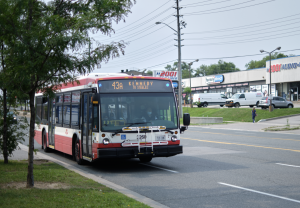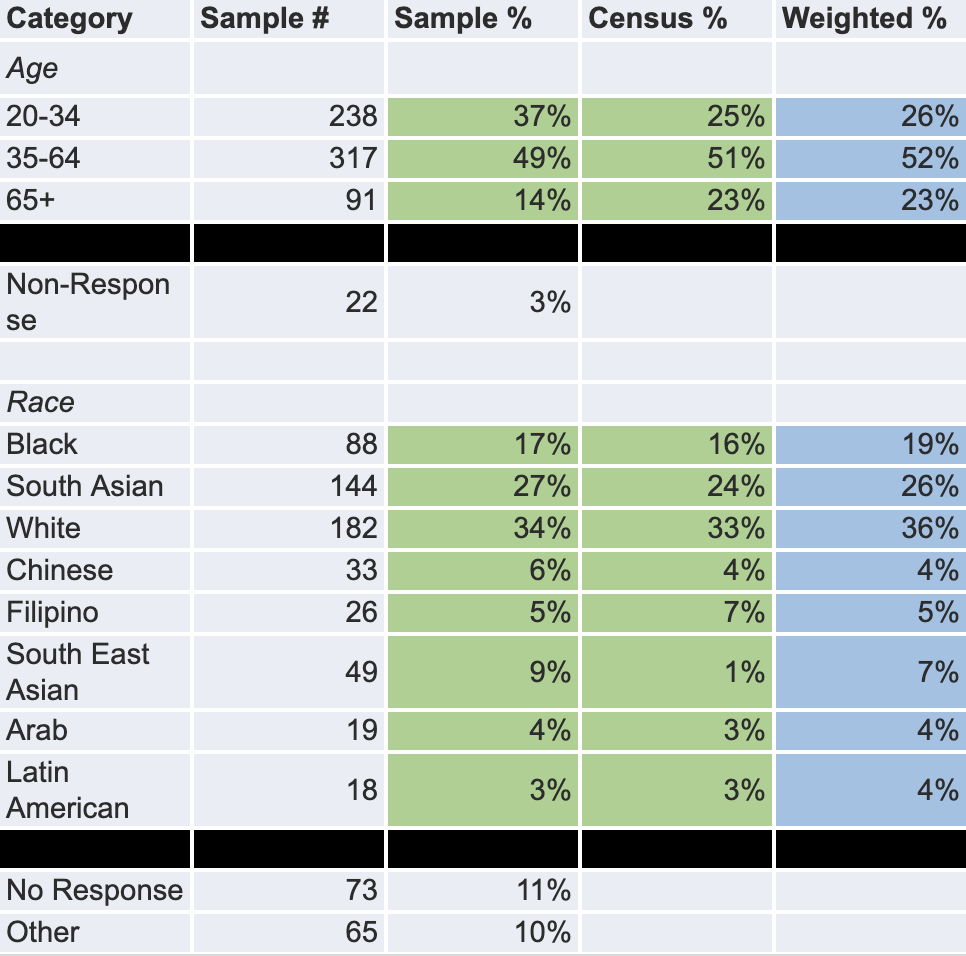
Quantitative Survey Design
We administered our survey to a random sample of 688 households in our focus neighbourhoods and conducted interviews with 24 residents (13 from the East End, 11 from the West End). The survey probed residents about the following:
- Neighbourhood priorities and perceptions
- Policy preferences and perceptions of institutions
- Demographic characteristics
Interviews allowed respondents to articulate their experiences in more depth. Most survey questions were adapted from other high quality surveys, such as the General Social Survey or the Canadian Census. Overall, the survey achieved a highly representative sample of the study areas, especially after weighting by education, age, and housing type (see table below). Interview respondents did not differ markedly from the overall sample as a group, except in containing a higher proportion of women and racialised persons.
This table (click to enlarge) summarizes key characteristics of our survey respondents, and compares them to figures for the same communities from the Canadian Census. Especially after weighting our sample by age, education, and housing type, the study population approximates the Census to a very high degree.
Qualitative Study Design
Following the survey we conducted 24 semi-structured interviews with respondents, which ran 40 minutes on average. The interviews took place over approximately 6 months, beginning in October 2019 and ending in March 2020. Of those interviews, 13 of the 24 were conducted from our East End neighbourhoods and 11 from West End neighbourhoods. Initially, interviewees were chosen from a random sample of survey participants, but as this yielded limited numbers of respondents, we opted for an open call to all survey participants, except for those who resided in the control neighbourhoods.
The aim of the interviews was to explore at a greater depth some of the trends that were beginning to emerge from the quantitative data at the time, and to gain a much deeper understanding of the social and environmental factors that may have informed survey responses. Demographic information on each interviewee was pulled from the survey. Of those interviewed, sixteen participants self-identified as women, seven as men and one did not provide a gender. Five of the interviewees were over the age of 50 (with one participant over the age of 65), and 19 of those interviewed belonged to a visible minority and/or racialized group (four Black, one Black/Latin American, one Arab/Black, four White, seven South Asian, two Chinese, two other/did not specify). It should be noted that a higher proportion of interview participants were middle income and/or had a post-secondary education compared to our overall sample. Recruiting racialized men and women over 60, and recruitment of men in general was a challenge and it should be noted that the advent of COVID-19 led us to end the West end interviews earlier than planned.
Consistent priorities across surveys and interviews
 Based on the data that emerged from the quantitative and qualitative analysis, we identified three areas that were prioritised by residents in both the survey and interviews:
Based on the data that emerged from the quantitative and qualitative analysis, we identified three areas that were prioritised by residents in both the survey and interviews:
- Safety
- Transportation and Mobility
- Neighbourhood Amenities and Services
We also determined two additional priority areas for many residents, but which did not appear consistently across the survey and interviews:
- Housing
- Diverse Communities






